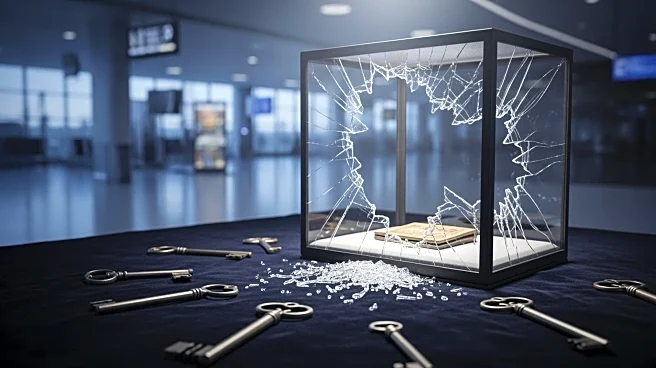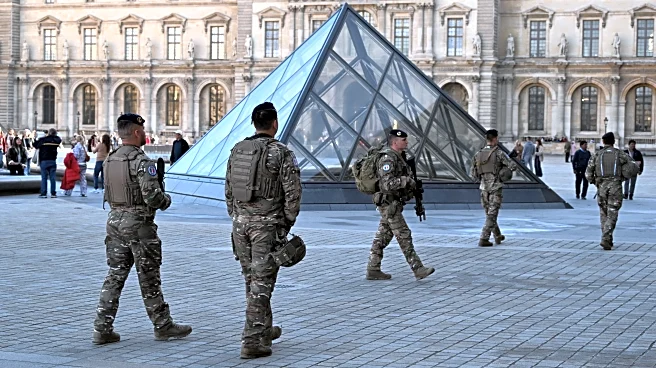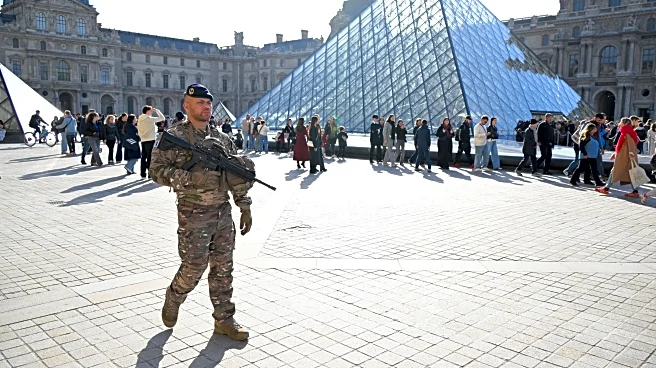What's Happening?
Paris prosecutor Laure Beccuau has identified the suspects involved in the recent Louvre heist as local petty criminals with no significant ties to organized crime. The suspects, three men and one woman,
hail from Seine-Saint-Denis, a suburb north of Paris. The individuals have varied criminal records, primarily involving robbery, but none suggest involvement with organized crime. The heist, which took place on October 19, involved the theft of nine items from the Apollo Gallery, including a diamond and sapphire jewelry set. The suspects used a truck-mounted ladder to access the gallery and broke into high-security display cases. The prosecutor noted that the rapid progression of individuals from petty crime to serious offenses is not surprising.
Why It's Important?
The identification of the Louvre heist suspects as local petty criminals rather than organized crime members highlights a shift in criminal dynamics, where individuals with minor criminal backgrounds are engaging in high-profile crimes. This trend may necessitate changes in law enforcement strategies, focusing more on local crime networks and their potential to escalate criminal activities. The heist underscores the need for robust security measures at cultural institutions to protect valuable artifacts. The incident may prompt museums worldwide to reassess their security protocols, balancing public access with the protection of cultural heritage. The case also raises concerns about the influence of socio-economic factors on crime rates in urban areas.
What's Next?
The investigation into the Louvre heist is ongoing, with authorities likely to explore further connections and potential insider involvement. Efforts to recover the stolen items continue, and additional arrests may occur as the investigation progresses. The case may lead to increased security measures at museums globally, including enhanced surveillance and stricter access controls. Legal proceedings against the suspects will unfold, potentially revealing more details about the heist and the individuals involved. The outcome of the case could influence future policies on cultural heritage protection and crime prevention.
Beyond the Headlines
The Louvre heist highlights the ethical and cultural importance of safeguarding historical artifacts, which are irreplaceable links to the past. The theft raises questions about the balance between public access to cultural treasures and the need for stringent security measures. It also underscores the potential for cultural heritage to become a target for criminal activity, necessitating international cooperation in protecting such assets. The case may prompt discussions on the legal frameworks governing the protection of cultural property and the responsibilities of institutions in ensuring their security.












